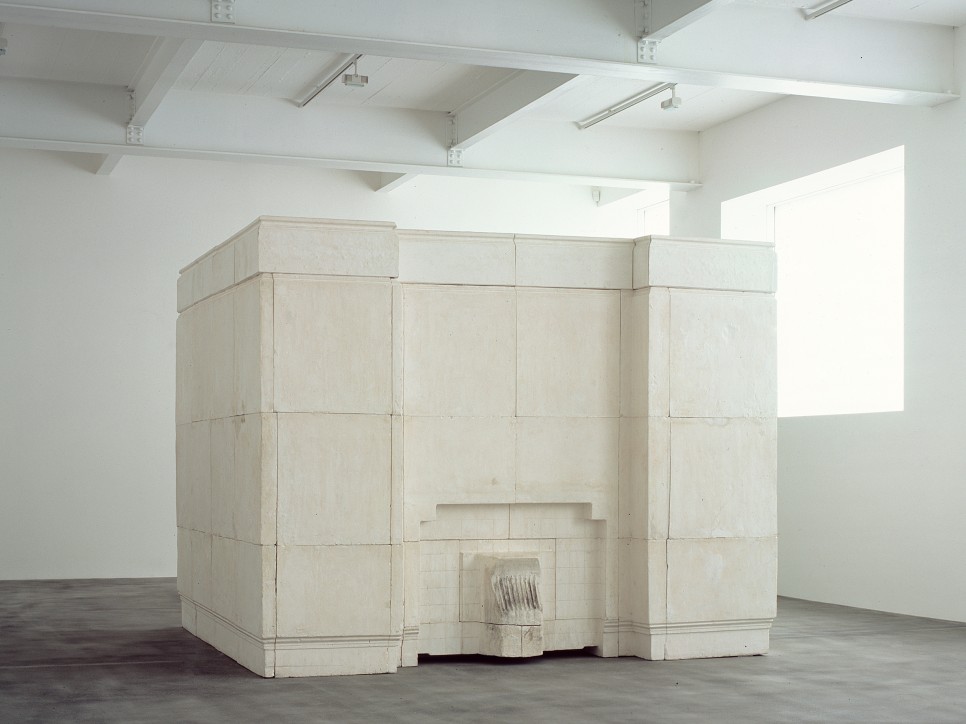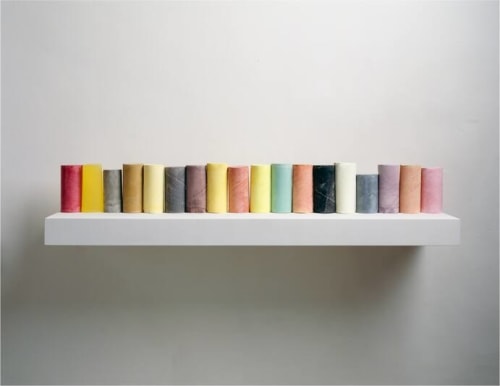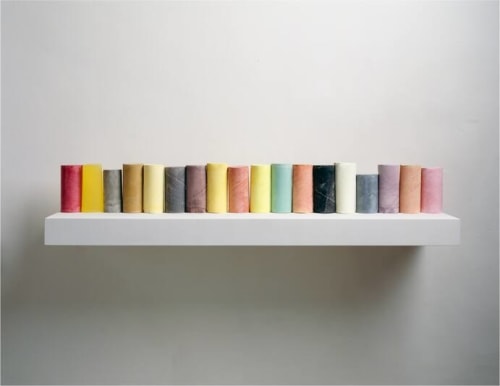

Rachel Whiteread. "Line Up," 2007-2008, plaster, pigment, resin, wood and metal. (Rachel Whiteread/Mike Bruce/Private Collection)
Walk through the Rachel Whiteread exhibition at the National Gallery of Art, and the dominant emotion is one of thankfulness. The British sculptor, who for decades has made casts of things in the world — the interior of a room, the space under a chair, the insides of a water bottle, even an entire house in East London — hasn’t wasted a minute of your time. Her work lingers in the memory, draws you both deeper into your own head and back to the world. We have designed a world perniciously perfect in its assault on time, addicting us to distraction and squandering our hours with pettiness and anger. Whiteread’s sculpture fights against that, suspending and enhancing our sense of time in a way that is as powerful to 21st-century sensibility as the daguerreotype was to the 19th-century imagination.
For almost a decade before the National Gallery’s East Building closed for renovations in 2013, Whiteread’s white-plaster monolith “Ghost” sat on the mezzanine level, in front of a wall of windows. It is one of the artist’s essential early works, her first effort to cast the interior of a room-size space. She had made smaller casts before, of household objects, but to make a room-size replica of a Victorian parlor she had to divide up the space into a grid of smaller panels, each about 2½-feet square. These were mounted on a metal armature, and the result was a white cube, with a few enigmatic protrusions and a curious declivity capturing the negative space of the fireplace.
Read full article at washingtonpost.com

